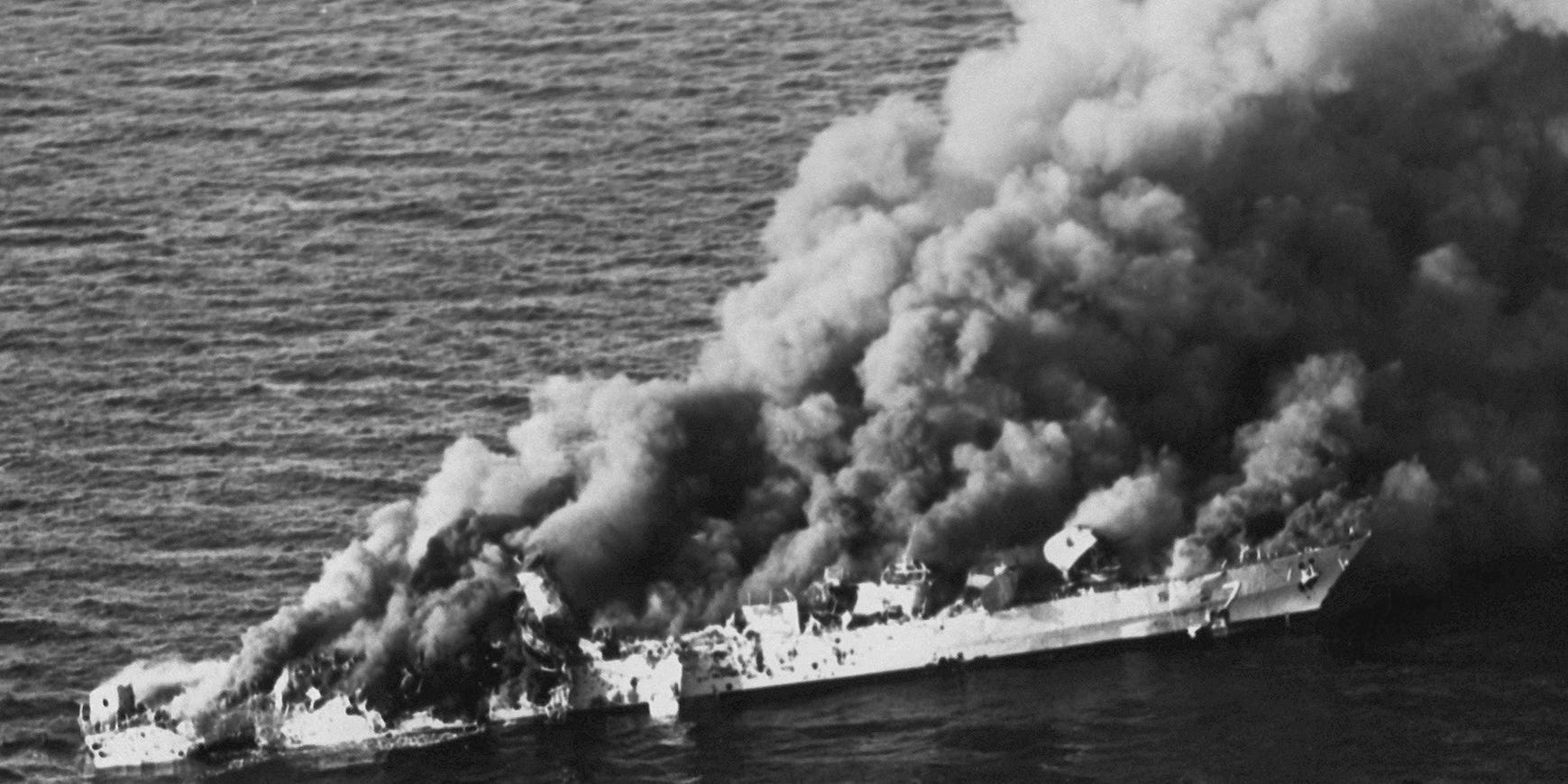
US Navy
- In April 1988, the US attacked Iran in the Persian Gulf in retaliation for the mining of a US ship.
- Operation Praying Mantis, the largest US naval action since World War II, was brief but deadly.
- Thirty-three years later, the weapons each side would use have only gotten more destructive.
- See more stories on Insider's business page.
Just before 8:00 a.m. on April 18, 1988, members of Iran's Islamic Revolutionary Guard Corps Navy (IRGCN) stationed on the Sassan and Sirri oil platforms in the Persian Gulf received a warning from US Navy ships several thousand yards away.
"You have five minutes to abandon the platform. I intend to destroy it at 0800," the warning said.
Some Iranians boarded ships and fled, but others began manning gun emplacements. Shortly after 8:00 a.m., the platforms were hit with barrages of gunfire from US destroyers, frigates, and a guided-missile cruiser.
They were the opening shots of Operation Praying Mantis, retaliation for Iran's mining of the Persian Gulf, which had damaged the guided-missile frigate USS Samuel B. Roberts days earlier.
It would be the US's largest naval action since World War II and the first time warships engaged one another with anti-ship missiles.
A tense Gulf
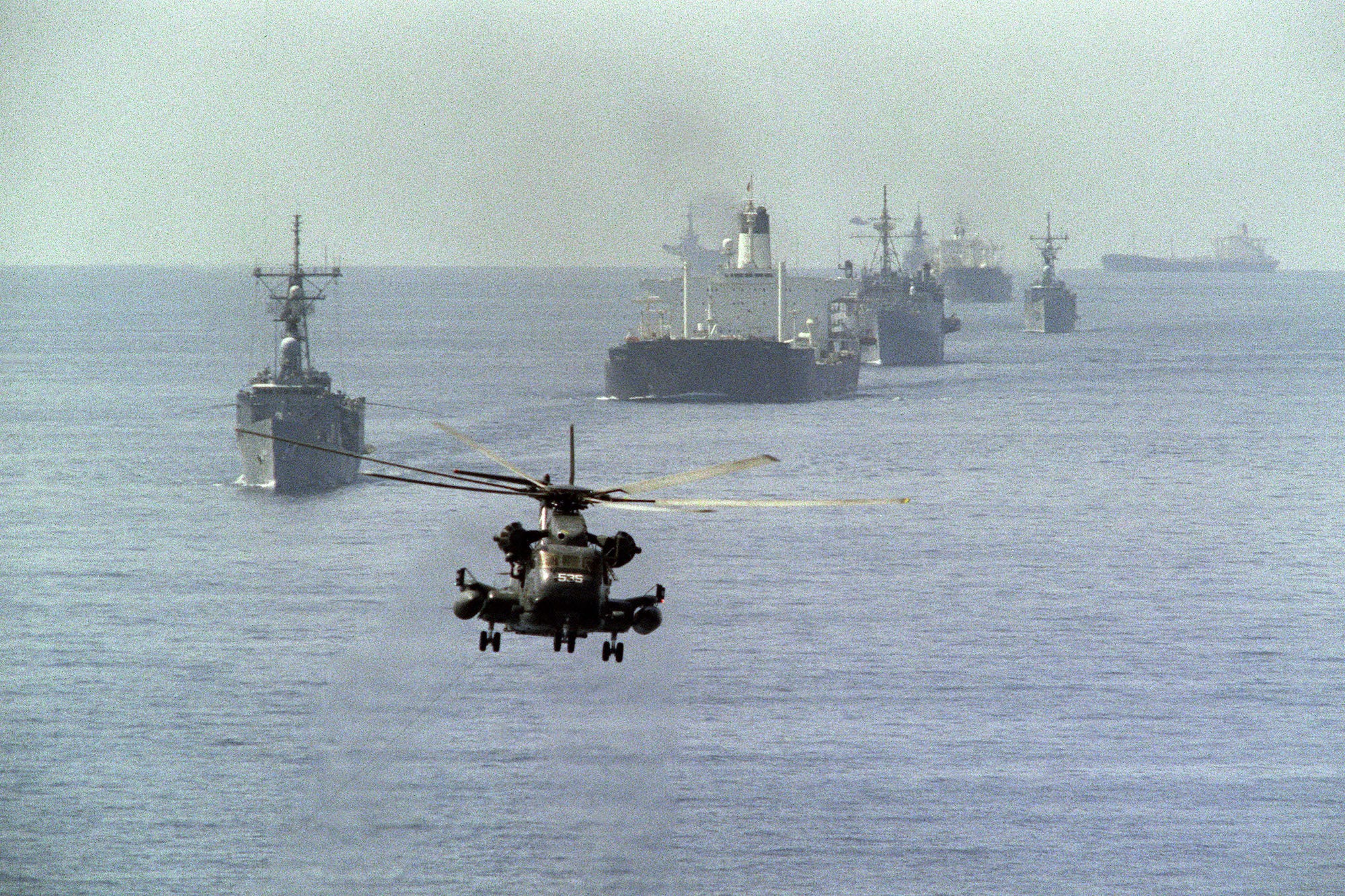
NORBERT SCHILLER/AFP via Getty Images
Tensions were extremely high in the Persian Gulf in the late 1980s. Iran had been fighting a brutal war with Iraq since September 1980, and although Iran reclaimed territory lost early in the war, by 1983 it was a stalemate.
In 1984, Iraq began attacking Iranian oil tankers and facilities in an attempt to damage Iran's economy. Iran responded in kind, and eventually foreign vessels became targets in what is known as the Tanker War.
Iran was particularly aggressive, as Iraq was receiving financial and material support from other Gulf States, namely Kuwait and Saudi Arabia.
The IRGCN's swarms of Boghammers and other small, armed fast-attack boats, along with sea mines and attacks from Iranian Navy frigates, were taking their toll. (By the end of the war, Iran had attacked some 190 ships from 31 countries, killing at least 63 sailors.)
At the request of Kuwait, the US Navy began escorting tankers, reflagged as American ships, through the Gulf. Unwilling to attack the US Navy directly, the IRGCN increased its mine-laying.
The US Navy tried to stop these efforts with a number of actions.
On September 21, 1987, the Navy forcibly seized the Iranian minelayer Iran Ajr while it was on a mission, killing five and capturing 26 sailors and 10 mines. In two engagements the following month, the Navy sank three IRGCN boats and destroyed two oil platforms used as IRGCN bases.
A military response
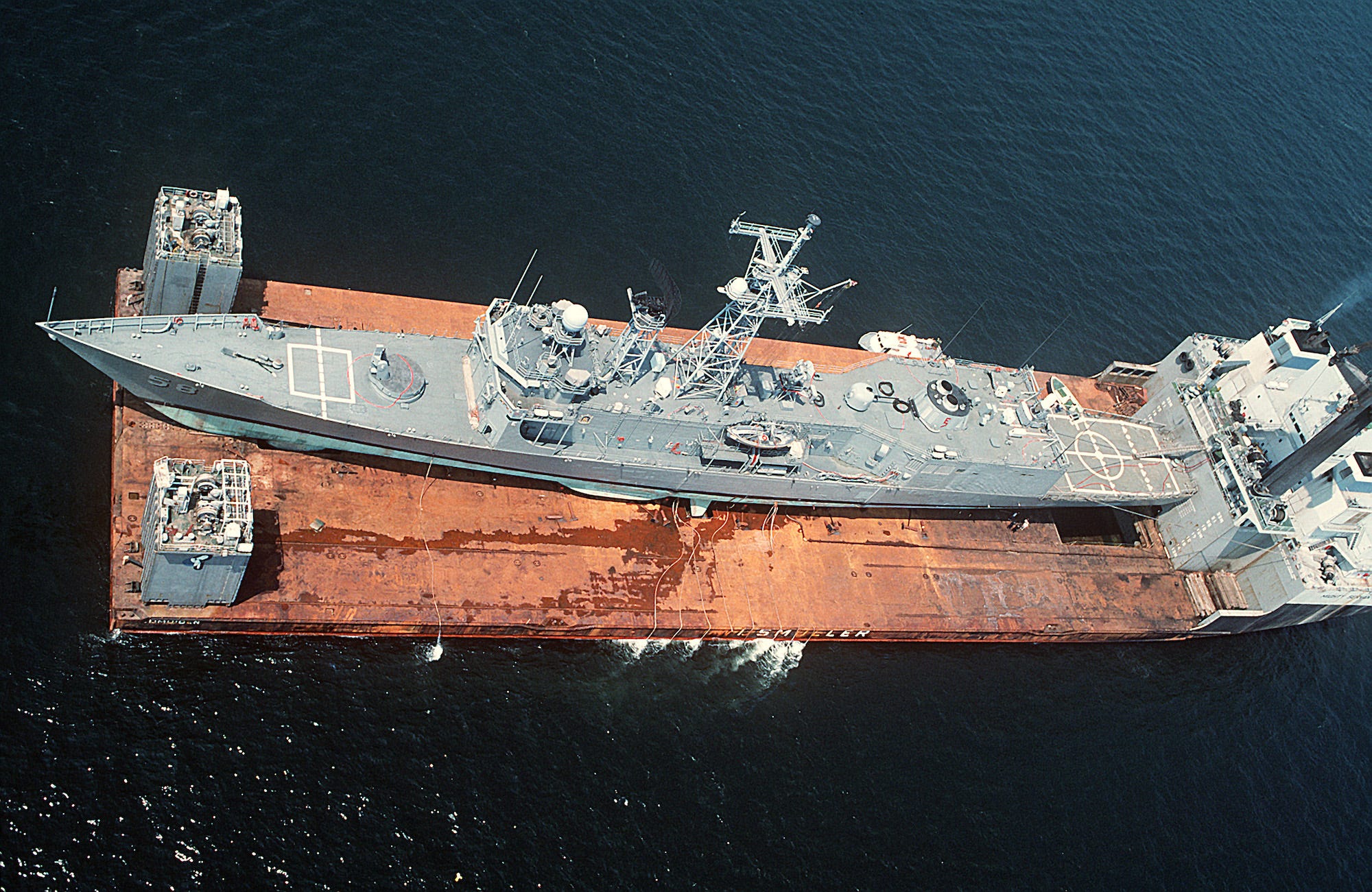
US Navy
But the Iranians continued laying mines, and on April 14, 1988, the guided-missile frigate USS Samuel B. Roberts struck one. Ten sailors were injured, four with serious burns. The blast left a 15-foot hole in the hull and broke the keel of the warship.
Serial numbers from nearby unexploded mines matched those on mines captured aboard Iran Ajr. With this evidence, President Ronald Reagan ordered a military response, which was carried out by three Navy Surface Action Groups (SAGs) named Bravo, Charlie, and Delta.
Bravo, with two destroyers and an amphibious transport dock and four Sea Cobra and two UH-1 Iroquois attack helicopters, would attack the Sassan platform.
Charlie, with two frigates and a guided-missile cruiser, would attack the Sirri platform.
Delta, with a frigate and two destroyers, was tasked with sinking the Iranian frigate Sabalan - which was known for particularly aggressive attacks - or any other Iranian frigate it could find.
SAG Bravo and SAG Charlie would land a team of Marines and Navy SEALs on Sassan and Sirri, respectively, who would clear the platforms and collect anything of value before destroying them.
The ships of SAG Delta would operate in the Strait of Hormuz, waiting for Iranian frigates to leave Bandar Abbas naval base. They were supported by aircraft from the carrier USS Enterprise, which was sailing in the Gulf of Oman.
Operation Praying Mantis
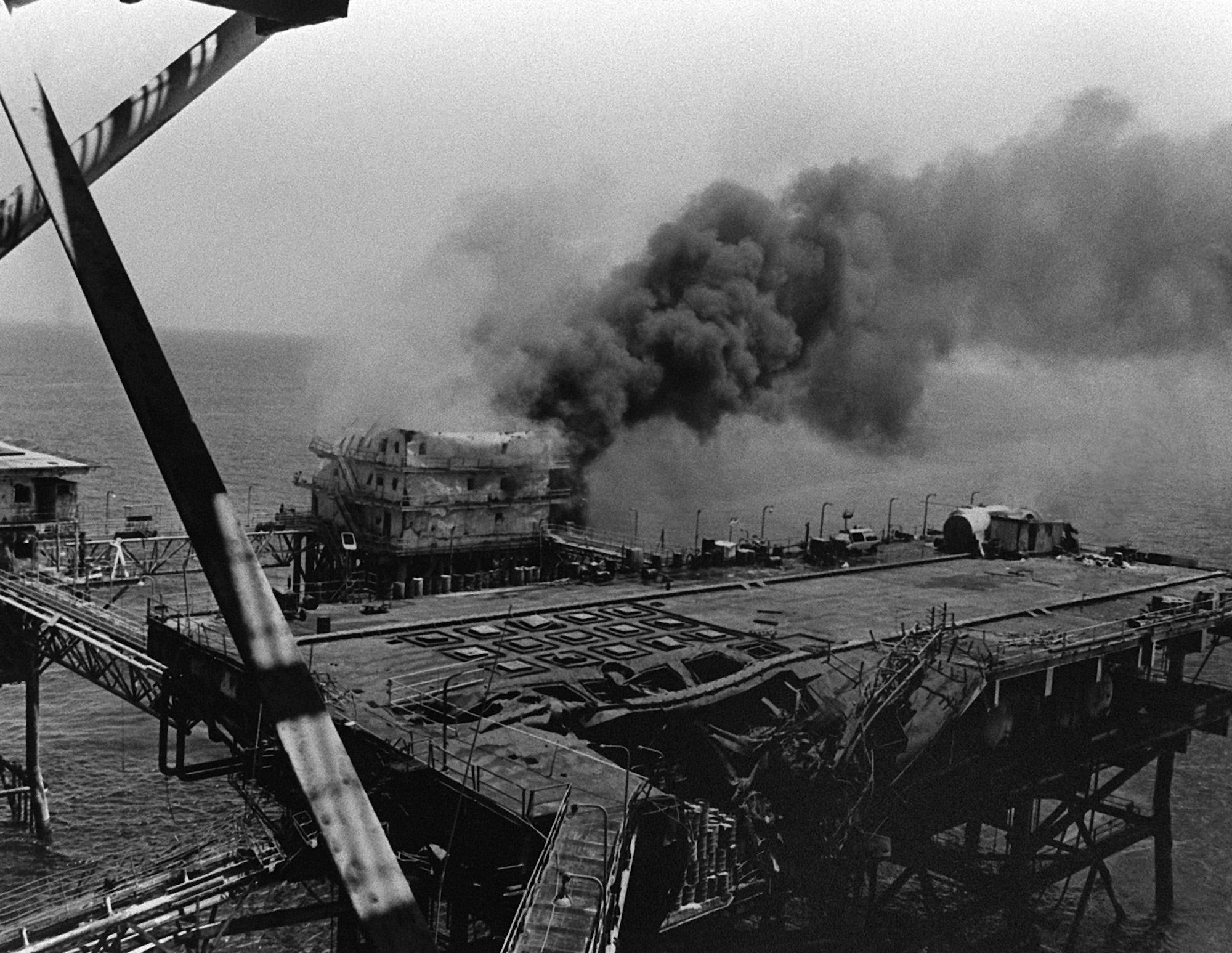
US Navy
At 8:04 a.m., SAG Bravo's ships opened fire on Sassan. Fifty airburst rounds from their 5-inch guns tore into the platform, and a ZSU-23 anti-aircraft was destroyed almost immediately after it tried to return fire. The US ships ceased fire to let more Iranians evacuate, then opened fire again with naval guns and from helicopters.
At 9:25 a.m., a team of Marines fast-roped onto the platform, securing it within 30 minutes. Two hours later they evacuated, destroying the platform with over 1,000 pounds of plastic explosives detonated remotely.
SAG Charlie opened fire on Sirri at 8:15 a.m. after its warning was sent and some Iranians evacuated. The platform erupted in flames, incinerating the remaining defenders. The fire was so intense that the SEAL Team landing was called off.
About three hours later, IRIS Joshan, an Iranian patrol vessel, approached SAG Charlie. Joshan ignored repeated warnings, the last of which said "Stop and abandon ship. I intend to sink you." The Iranian ship fired a single Harpoon anti-ship missile, which was defeated by US countermeasures.
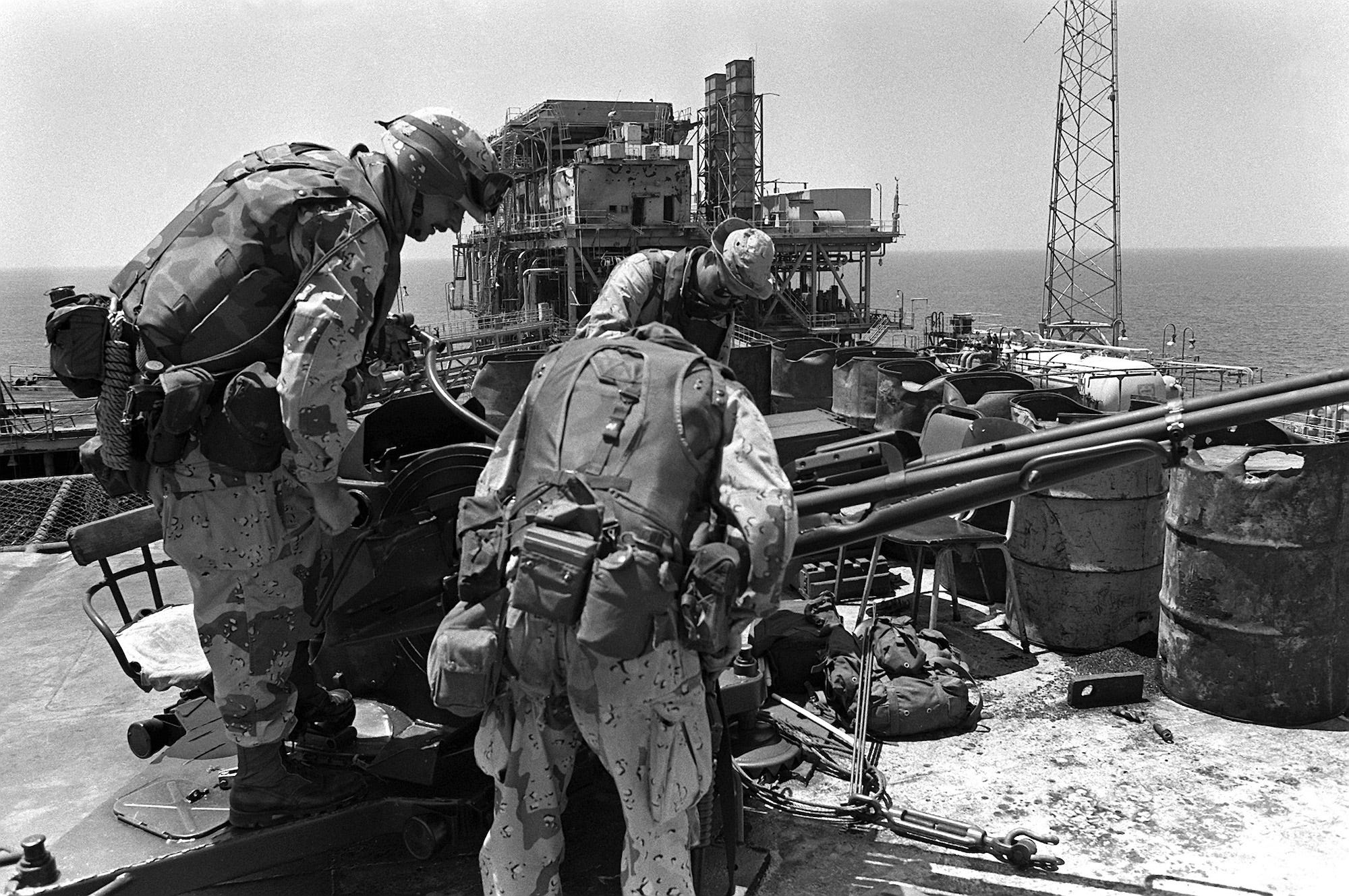
US Marine Corps/Cpl. John Hyp
Joshan was then hit by five missiles from SAG Charlie, destroying it in what was the first missile duel between warships. Joshan's burnt hulk was then sunk by US gunfire. An Iranian F-4 fighter jet approached but withdrew after it was hit by an anti-aircraft missile from USS Wainwright.
SAG Delta, meanwhile, was looking for the IRIS Sabalan. Five IRGCN Boghammers had attacked the Mubarak offshore oil field in retaliation, damaging some tankers and drilling rigs. In response, aircraft from Enterprise, using coordinates from SAG Delta, attacked the boats, sinking one and damaging the other four.
IRIS Sahan, another Iranian frigate, was then detected heading toward Mubarak. After firing at Enterprise's aircraft, it was torn to shreds by bombs and missiles from A-6 attack aircraft and the guided-missile destroyer USS Joseph Strauss. Sahan sank later that night.
IRIS Sabalan finally showed up two hours later and was hit by a single 500-pound bomb that went directly into its smoke stack, seriously damaging it and bringing it to a halt.
SAG Delta requested permission to finish Sabalan off, but the Navy decided to de-escalate and allowed it to be towed back to Iran.
A different future
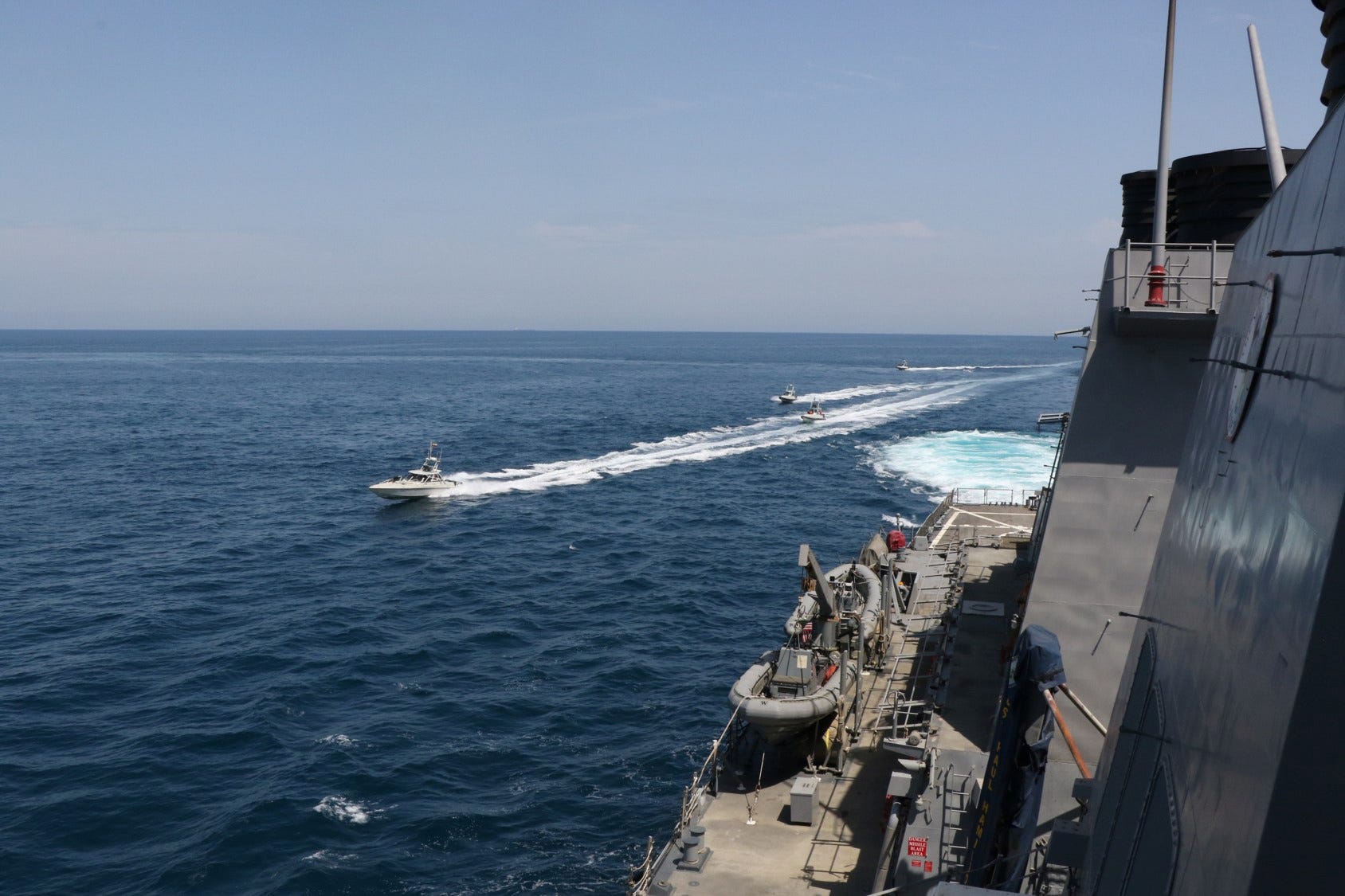
Reuters
By the end of the day, the Navy had destroyed two IRGCN bases, sunk three Iranian vessels, and seriously damaged five more, killing over 50 IRGCN and Iranian Navy personnel in the process.
American casualties were one SeaCobra and its two-man crew, who crashed while on a reconnaissance mission.
Operation Praying Mantis provides a glimpse of what a future naval conflict with Iran in the Persian Gulf could look like.
The use of small armed speedboats to attack critical oil infrastructure and tankers, the fortification of offshore oil platforms, the mining of important trading lanes, and the use of Iranian Navy vessels in the Strait of Hormuz and Gulf of Oman are widely expected to be the primary tactics.
But a future conflict is unlikely to go as smoothly for the US as Operation Praying Mantis did, mainly due to Iran's military modernization and expansion.
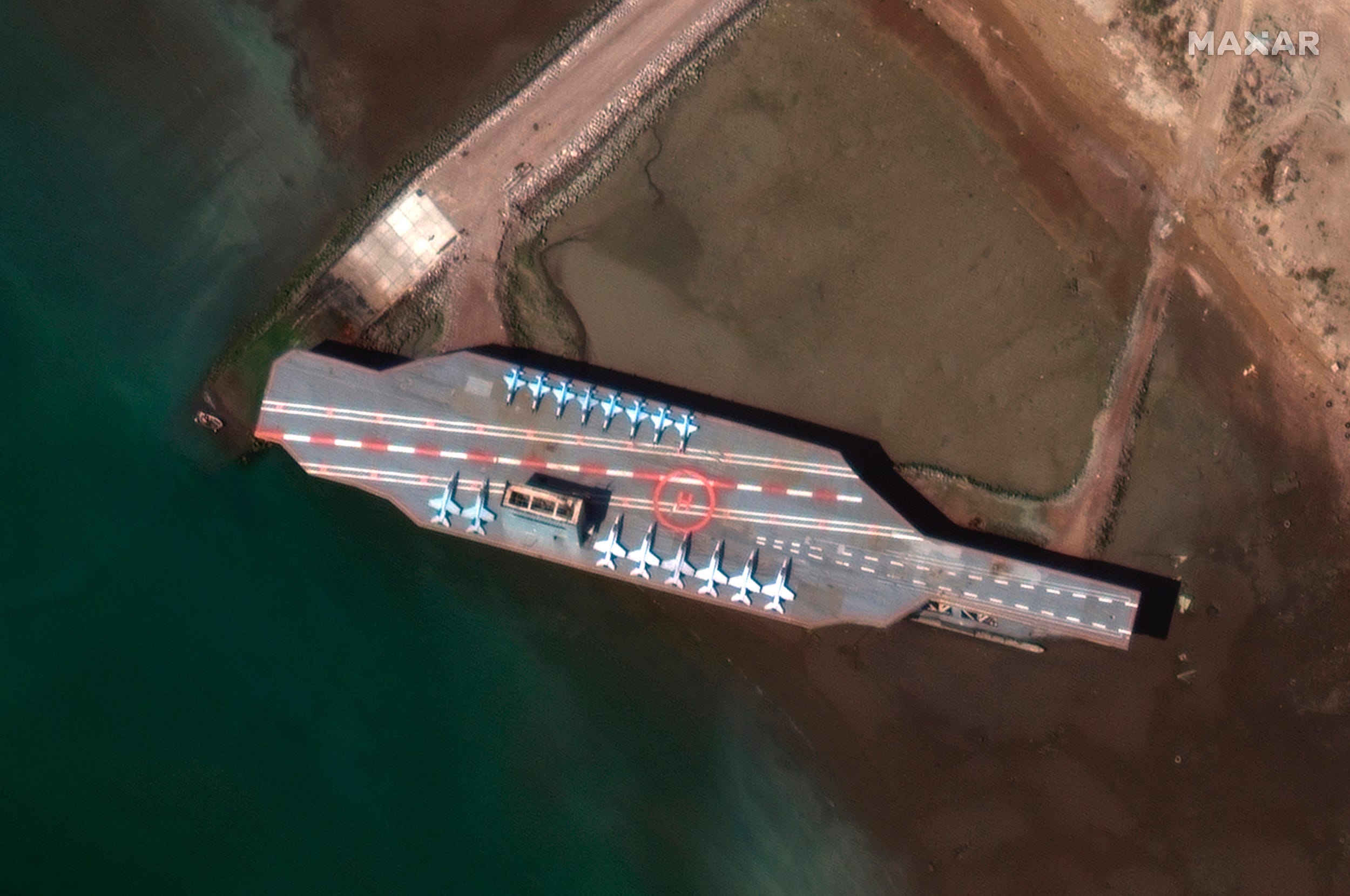
Maxar Technologies via AP
Iran's Navy has gotten larger and more capable, with more vessels able to launch anti-ship missiles and at least three Russian-built Kilo-class attack submarines in service.
Last year, an Iranian Navy exercise included an attack on a barge designed to look like a US aircraft carrier. In January, Iran unveiled the Makran, a "forward base ship" capable of carrying drones and helicopters.
The IRGCN has also been expanding its numbers and capabilities, including recent reports that it is building large missile-laden catamarans.
Iran's sea mines remain potent, but the biggest threat comes from Iran's missile arsenal, which is considerably larger and more advanced than it was in the 1980s.
In recent years, Iranian missiles have been used to attack Saudi oil facilities and civilian sites, as well as ships. In January 2020, Iranian cruise missiles hit US bases in Iraq, injuring over 100 service members.
Iran's missiles failed to hit their targets during Operation Praying Mantis, but things could be very different in the future.
Dit artikel is oorspronkelijk verschenen op z24.nl